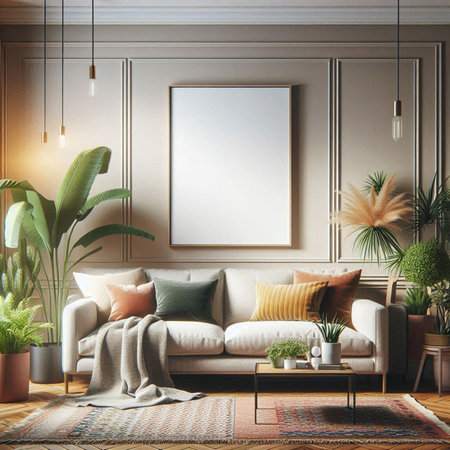1. Introduction: Embracing the UKs Varied Natural Light
When it comes to transforming a home, few elements are as influential as paint colour—yet in the UK, the natural light streaming through our windows can make or break even the most carefully chosen palette. The unique interplay of light between Northern and Southern regions creates distinct atmospheres that demand a thoughtful, location-specific approach to interior design. In the North, softer daylight and cooler undertones shape how hues appear on walls, while the South enjoys brighter, warmer sunlight that brings out different qualities in the same shade. By understanding these regional nuances, you can select colours that not only complement your space but truly enhance its character—ensuring your interiors feel inviting and harmonious, whether nestled in the rugged landscapes of Yorkshire or basking in the gentle glow of a Sussex afternoon.
2. Understanding Northern UK Light: Cool, Diffused, and Subtle
The unique character of natural light in the northern regions of the UK is an essential consideration when selecting paint colours for your interior spaces. Unlike the south, where sunlight is often brighter and more direct, northern light is defined by its soft, bluish undertones and gently diffused quality. This subtle illumination shapes not only how colours appear but also the overall mood and atmosphere within a room.
Northern UK homes typically experience more overcast days, with lower sun angles that result in less intense daylight. As a result, paint colours can look cooler or even slightly muted compared to how they might appear under southern sunlight. The cool, diffused light tends to bring out blue, grey, and green undertones in wall colours, affecting both perception and ambiance.
| Light Quality | Mood Created | Effect on Paint Colours |
|---|---|---|
| Cool & Bluish | Calm, serene, sometimes subdued | Emphasises cool tones, mutes warm hues |
| Diffused & Gentle | Softens edges, reduces glare | Colours may appear darker or greyer than on a swatch |
| Subtle & Consistent | Balanced throughout the day | Less dramatic shifts in colour from morning to evening |
This interplay between northern light and paint colours can create beautifully tranquil spaces but also runs the risk of making rooms feel cold or flat if not carefully considered. To counteract this effect, many interior designers recommend incorporating warmer shades—think creamy neutrals or soft blushes—or opting for rich pigments that retain depth even in low light. Ultimately, understanding the nuanced relationship between northern UK light and colour selection is key to achieving interiors that feel inviting, harmonious, and tailored to their environment.

3. Southern UK Light: Warm, Bright, and Inviting
The further south you travel in the UK, the more noticeably the quality of natural light transforms. Southern regions—think Sussex, Kent, or Hampshire—are celebrated for their sunnier skies and warmer daylight. This abundance of sunlight brings a golden, almost honeyed clarity to interiors, making spaces feel cheerful and expansive even on shorter winter days.
When it comes to choosing paint colours for Southern homes, these warmer and brighter conditions play a defining role. Sunlight in the South tends to be less blue-toned than in the North; instead, it amplifies yellow and red undertones in paint. What might look like a subtle off-white or gentle taupe on a sample card can appear much creamier or even take on blush hues once brushed onto your walls under a southern sun.
This means that classic cool greys can quickly shift towards lilac or blue if not carefully chosen, while whites can become positively radiant—almost glowing. Homeowners often find themselves drawn to paints with a touch more depth or neutrality to balance out this warmth. Earthy neutrals, soft sages, and dusty pinks work beautifully, offering sophistication without veering into garishness when flooded with sunlight.
Ultimately, understanding how southern light reveals undertones and subtly alters hues ensures that your chosen palette remains harmonious throughout the day. Its about embracing the inviting brightness while selecting shades that retain their intended mood and character from dawn until dusk.
4. Choosing Paint Colours for Northern Homes
Homes in the North of the UK often contend with cooler, greyer natural light, especially during lengthy autumns and winters. This unique lighting can make interiors feel colder or more muted if the wrong paint colours are chosen. To counterbalance this, selecting hues that enhance warmth, depth, and cosiness is essential—an approach rooted both in colour psychology and an understanding of local light conditions.
Suggested Colour Palettes for Northern Interiors
| Colour Family | Specific Shades | Psychological Effect | Best Rooms |
|---|---|---|---|
| Warm Neutrals | Soft taupe, creamy beige, gentle ivory | Adds warmth without overwhelming; creates a welcoming base | Living rooms, bedrooms |
| Earthy Reds & Terracottas | Baked clay, brick red, russet orange | Promotes cosiness and a sense of grounded comfort | Dining rooms, snug spaces |
| Sunlit Yellows & Ochres | Butter yellow, honey gold, mustard ochre | Mimics sunlight; brightens and enlivens shadowy corners | Kitchens, hallways |
| Sage & Olive Greens | Moss green, olive drab, muted sage | Adds depth and calm; connects interiors to nature outside northern windows | Home offices, conservatories |
| Dusky Blues & Plums (as accents) | Dusk blue, deep plum, slate grey-blue | Adds sophistication and contrast; best used sparingly to avoid a chilly feel | Feature walls, trims, soft furnishings |
Design Tips: Enhancing Warmth and Depth with Colour Psychology
- Embrace layered tones: Use two or three harmonious warm shades on different walls or architectural features to create visual interest and subtle transitions.
- Choose eggshell or satin finishes: These reflect more light than matt paints without being overly glossy—perfect for maximising limited daylight.
- Add texture: Pair painted walls with tactile elements like wool throws or velvet cushions in complementary hues for an extra dose of cosiness.
- Avoid cold undertones: Steer clear of stark whites or icy blues as main colours—they may amplify the coolness of northern light.
Northern Light: A Canvas for Creative Warmth
Northern homes offer the opportunity to experiment with richer palettes that might feel overpowering in brighter southern settings. By thoughtfully curating colour schemes that leverage both psychological effects and natural illumination patterns, you can transform even the gloomiest day into a haven of inviting comfort.
5. Selecting Shades for Southern Spaces
Homes in the southern regions of the UK enjoy an abundance of natural sunlight, often bathing rooms in a warm, golden glow throughout the day. While this enviable brightness opens up endless opportunities for colour expression, it also requires careful consideration to prevent interiors from feeling washed out or glaringly intense. The key is striking a balance between richness and luminosity—embracing the light while ensuring comfort and sophistication.
Balancing Richness and Brightness
With southern light amplifying hues, opt for paint colours that possess depth without overwhelming the senses. Earthy neutrals such as taupe, soft olive, and muted terracotta feel inviting and grounded, absorbing just enough light to maintain a sense of warmth. If you favour cooler palettes, look to dusky blues or sage greens—tones that remain tranquil under bright conditions yet avoid appearing stark or chilly.
Avoiding Glare
Glossy finishes can reflect too much of the sun’s energy, creating unwanted glare and visual discomfort. Instead, choose matte or eggshell finishes for walls; these will diffuse sunlight more evenly across the space. When selecting whites or creams, steer clear of pure brilliant whites as they can appear harsh—opt for those with subtle undertones of grey, peach, or yellow to soften the effect and add character.
Celebrating Sunlight
Southern exposure offers an opportunity to celebrate the cheerful ambiance it brings. Don’t shy away from bold accents—a feature wall in ochre or teal can become a lively focal point without overpowering a sunlit room. Pair these highlights with tactile natural materials such as linen curtains or oak flooring to reinforce a harmonious connection between indoor spaces and the ever-changing British daylight outside. Ultimately, let your palette echo the landscape’s own response to abundant sunshine: vibrant yet elegantly restrained.
6. Cultural Context: British Design Sensibilities and Local Traditions
British colour choices are steeped in a rich tapestry of regional traditions, architectural history, and an enduring appreciation for local character. In the North, the industrial heritage and prevalence of Victorian terraces have fostered an affinity for bold, comforting hues—think deep oxblood reds, bottle greens, and sturdy blues that stand resilient against overcast skies. These colours not only provide warmth but also evoke a sense of groundedness deeply rooted in northern communities. In contrast, southern homes—often influenced by Georgian or Edwardian architecture—favour lighter, more reflective palettes. Chalky whites, gentle creams, and soft pastels amplify the brighter natural light found in this region while honouring the area’s sun-drenched countryside and maritime tradition.
Regional Preferences and Period Architecture
The palette of a British home is never arbitrary; it’s shaped by the nuances of local taste and the period features of the property. Northern interiors might embrace heritage greens or dramatic charcoals to accentuate ornate fireplaces or original cornicing. Meanwhile, Southern interiors often seek to preserve the airy elegance of sash windows and high ceilings with understated shades that let architectural details shine. Homeowners frequently look to national institutions such as English Heritage or The National Trust for inspiration, referencing time-honoured palettes that connect their spaces to Britain’s wider design legacy.
Local Heritage as Inspiration
Across the UK, paint manufacturers offer collections inspired by historic landmarks—from Cotswold stone to Scottish baronial castles—ensuring modern homes remain in dialogue with their surroundings. This reverence for place means a home in Yorkshire might echo the moody tones of its windswept moors, while one on the Cornish coast channels seafoam blues and sandy neutrals. Ultimately, tailoring paint colour to both light and location is not just a matter of aesthetics; it’s about weaving together British identity, cultural memory, and a sense of belonging unique to every region.
7. Conclusion: Crafting Timeless Interiors Across the UK
In the quest for creating homes that are both beautiful and functional, responding thoughtfully to the unique natural light found across the United Kingdom becomes essential. Whether designing in the soft, diffused daylight of the North or embracing the brighter, crisper sunlight of the South, tailoring paint colours to regional lighting conditions allows interiors to truly sing. This approach not only enhances aesthetic elegance—highlighting architectural features and complementing furnishings—but also brings warmth, comfort, and usability to everyday living spaces. By marrying design sensibility with an understanding of local climate and light, homeowners and designers can achieve timeless interiors that feel harmonious year-round. Ultimately, it is this careful balance between visual allure and practical adaptation that defines sophisticated British interiors from Edinburgh’s Georgian terraces to Cornwall’s coastal cottages.


